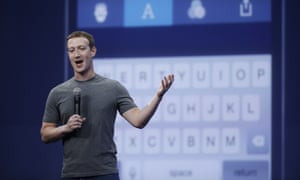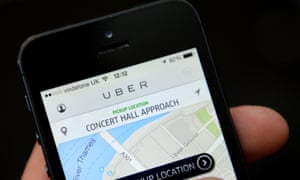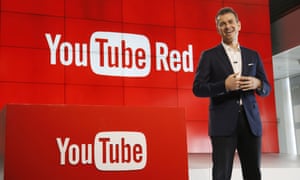1) Institution: the impact of Google on the newspaper industry
2) Audience and Institution: how news consumption has changed
3) The future of newspapers: Build The Wall analysis
4) The decline of newspapers: the effect of online technology
5) Citizen journalism: Media Magazine article and questions
6) News Values: theory and updating them for digital media landcape
7) Marxism & Pluralism: Media Magazine article and questions
8) Media Conference: notes from speakers
9) Marxism and Pluralism: views and values question
10) NDM Section B essay on blog - consumption and production question
11) Marxism and Pluralism: Alain de Botton on the news - lecture and questions
12) Globalisation: questions and blog task
13) Globalisation: Media Magazine - Google Glass, techno-panics and data mining
14) News on the Tweet report and questions
15) Audience and Institution article and questions
16) Institution case study: NDM and News Corporation
Monday, 21 December 2015
Friday, 11 December 2015
NDM institution case study: News Corporation
1) Research News Corporation’s response to the growth of new and digital media by listing each of the institution’s brands (Sky News, Times etc.) Have any closed, changed or been in the news in the last 10 years for any reason?
2) Develop examples of the impact that new and digital media has had on News Corp’s brands (paywalls, readership figures, audience share etc.)
3) Use what you have found out about News Corp to answer the following question:
Why and with what success are traditional media institutions adapting to the challenge posed by new/digital media?
New and digital media is now the dominant and most popular platform, traditional media institutions are being forced to adapt. It's notable that traditional media institutions are generating less profit as citizen journalism helps spread news on social media sites like Twitter and Facebook Also, many people get news through "word of mouth" which evidently shows how traditional institutions, like The Sun, are losing readers which ultimately prompted them to put up a paywall to gains some income.
To conclude, news institutions are not adapting to the challenge introduced by new and digital media very well because it is not the change in platform that is necessarily the problem. The accessibility of free news on websites such as the BBC is responsible for the decline in newswpapers, even if they make the switch to new and digital media proven by the Sun still making losses despite 250,000 subscribers.
- The Sun
- The Times
- Sunday Times
- Fox Entertainment
- News International
2) Develop examples of the impact that new and digital media has had on News Corp’s brands (paywalls, readership figures, audience share etc.)
New and digital media has negatively impacted all of Newscorps brands. Online news is more accessible and this had resulted in the decline of the newspaper industry. For instance, broadsheets such as The Sun have made a loss. The Sun is behind a paywall in an attempt to regain revenue through online subscriptions, however even The Sun's 225,000 subscriptions can not make up for the decline in broadsheet sales.
Why and with what success are traditional media institutions adapting to the challenge posed by new/digital media?
New and digital media is now the dominant and most popular platform, traditional media institutions are being forced to adapt. It's notable that traditional media institutions are generating less profit as citizen journalism helps spread news on social media sites like Twitter and Facebook Also, many people get news through "word of mouth" which evidently shows how traditional institutions, like The Sun, are losing readers which ultimately prompted them to put up a paywall to gains some income.
To conclude, news institutions are not adapting to the challenge introduced by new and digital media very well because it is not the change in platform that is necessarily the problem. The accessibility of free news on websites such as the BBC is responsible for the decline in newswpapers, even if they make the switch to new and digital media proven by the Sun still making losses despite 250,000 subscribers.
NDM: The key concepts of audience and institution
1) What was the relationship between audience and institution in the pre-digital age?
The two concepts are inseparably connected. While their business models and products might differ, all institutions need audiences if they are to generate profit.But whilst every institution needs an audience, contemporary audiences are increasingly able to access media in ways which bypass traditional media institutions.
2) The article gives a lot of examples of major media institutions. Choose three examples from the article and summarise what the writer is saying about each of them.
ITV - relies on income generated by advertisers. This means that appeal to a large audience are seen as more valuable than ones with smaller niche audiences
Sky One - needs an income from subscribers and may well invest in programming that attracts a loyal audience, who are more likely to invest in a long term subscription to guarantee early access to the shows they enjoy.
The MailOnline - receives more income the longer a reader stays on the site, so stories will feature lots of images and videos, and sensationalised or controversial
3) The article ends with a section on the digital age
In today's society, audiences now have more freedom to access media products when they choose, rather than when they are told. Mobile technology allows audiences to carry TV programmes, films, music and all that is on offer on the internet on tablets and smartphones. Modern audiences now expect to be able to communicate directly with institutions, and to be able to construct their own media products for themselves. The ability to download and/or stream films and music on demand has led to a change of attitudes regarding media products; contemporary audiences do not see them as having much monetary value, since they are so widely and freely available.
4) How do YOU see the relationship between audience and institution in the future? Will audiences gain increasing power or will the major global media institutions hold sway?
An institution’s economic success is still dependent on the behaviour and preferences of the audience; but traditional media institutions do not always respond quickly to change. I believe audiences will have more increasing power over the next few years, however major global media institutions will always be the main forefront as audiences use those institutions to conform whether news is accurate or not.
The two concepts are inseparably connected. While their business models and products might differ, all institutions need audiences if they are to generate profit.But whilst every institution needs an audience, contemporary audiences are increasingly able to access media in ways which bypass traditional media institutions.
2) The article gives a lot of examples of major media institutions. Choose three examples from the article and summarise what the writer is saying about each of them.
ITV - relies on income generated by advertisers. This means that appeal to a large audience are seen as more valuable than ones with smaller niche audiences
Sky One - needs an income from subscribers and may well invest in programming that attracts a loyal audience, who are more likely to invest in a long term subscription to guarantee early access to the shows they enjoy.
The MailOnline - receives more income the longer a reader stays on the site, so stories will feature lots of images and videos, and sensationalised or controversial
3) The article ends with a section on the digital age
In today's society, audiences now have more freedom to access media products when they choose, rather than when they are told. Mobile technology allows audiences to carry TV programmes, films, music and all that is on offer on the internet on tablets and smartphones. Modern audiences now expect to be able to communicate directly with institutions, and to be able to construct their own media products for themselves. The ability to download and/or stream films and music on demand has led to a change of attitudes regarding media products; contemporary audiences do not see them as having much monetary value, since they are so widely and freely available.
4) How do YOU see the relationship between audience and institution in the future? Will audiences gain increasing power or will the major global media institutions hold sway?
An institution’s economic success is still dependent on the behaviour and preferences of the audience; but traditional media institutions do not always respond quickly to change. I believe audiences will have more increasing power over the next few years, however major global media institutions will always be the main forefront as audiences use those institutions to conform whether news is accurate or not.
Monday, 7 December 2015
NDM case study: News on the Tweet
Why are respected news brands good news for Twitter?
Why in turn is Twitter good for respected news brands?
The report suggests that old and new media “are not, in fact, in direct competition, but often work extremely well together to enhance both the media eco-system and the consumer experience”. What evidence do they provide to support this idea? Do you agree with it?
On page 24/25 of the report, the focus turns to 'gossip' or 'banter'. What example tweets from journalists are used to illustrate this?
What does the report say about trust in Twitter and journalists (look at pages 34-39)?
Finally, do you think new and digital media developments such as Twitter have had a positive or negative impact on traditional newspapers?
Respected news brand help to drive Twitter activity; an estimated four in 10 agree they
check Twitter frequently to
see what is going on with their
favourite newspaper brands. This is what helps make
newsbrand followers
such a valuable
audience
for Twitter.
They are three
times more likely
to retweet than
non-followers; four
times more likely to post
links to articles and three times
more likely to tweet about
trending news topics. They are
also far more likely to share
their thoughts and reply to
opinion about the news.
Naturally, this means that
newsbrand followers
visit Twitter more
often - they are 60%
more likely to visit
on a daily basis than
non-followers and more
than twice as likely to post
on a daily basis. Of course, this
provides excellent promotion
for the newspaper brands,
driving readership to both
online and print.
Why in turn is Twitter good for respected news brands?
Twitter is helping to make newsbrands more accessible, more influential and more connected than ever before. The immediacy and accessibility of Twitter brings valuable readers to newspaper brands that they would not normally read in print or directly online.
The report suggests that old and new media “are not, in fact, in direct competition, but often work extremely well together to enhance both the media eco-system and the consumer experience”. What evidence do they provide to support this idea? Do you agree with it?
Legacy media is not in
direct competition, but often
works extremely well together with new media to
enhance both the media
eco-system and the
consumer experience.
In the case of Twitter
and newspaper brands,
enhancement takes place
in four different ways to help benefit the audience: knowledge, opinion, gossip and banter.
On page 24/25 of the report, the focus turns to 'gossip' or 'banter'. What example tweets from journalists are used to illustrate this?
- Benedict Brogan @benedictbrogan • Jan 10 I’ve interviewed Nigel Farage. Dave won’t like it, obvs. But neither will @Ed_Miliband. Not at all. Will post link when I’ve found it
This is an example of banter as Brogan uses slang.
Do you think the increasing amount of 'gossip' or 'banter' is harming the reputation of news and journalists?
Gossip and banter about celebrities, sports or political scandals are all part of the entertainment and are often turned to when newsbrand followers want to relax. They are looking for both humour as well as ‘backstage access’ into the lives of the people and things they are interested in. Newsbrands are responsible for some of the most popular individual tweeters. Individual journalists are key contributors to the humorous content on Twitter. Also, the audience can relate to journalists on a personal level as banter helps to create a more lively outlook.
Finally, do you think new and digital media developments such as Twitter have had a positive or negative impact on traditional newspapers?
Almost half of all Twitter
users, and almost two thirds
of newsbrand users, say it is
important that news on Twitter
is verified by a respected brand.
This helps build trust in the content. The journalists themselves are
frequently used as a source
of breaking news, often being
the first source of relevant
stories for their follower; they are also trusted to have
an insider view that is more
informed than that of casual
commentators and are felt to
be less constrained in how they
communicate their opinions.
They are also regularly lauded for
their witty and humorous insights.
Overall, new and digital developments have an equal balance of both positive and negative impacts. This is clearly evident as Twitter has helped attract a variety of audiences to traditional newspapers online, this is done through click-bait tweets. Ultimately, this drives Twitter users to look at online newspapers, helping brands such as the BBC to generate sufficient revenue. However, the root of the issue derives from the fact that audiences are not buying print media as much, as it usually tends to be the older generation who appreciate traditional media more than the younger generation. The reason for this is because most of the younger generation, who are most likely to have Twitter, can read content online from verified newspaper accounts which tweet all of their articles; this is a quicker and more accessible. From my perspective, verified Twitter accounts are seen to supply accurate news, so it would be pointless to buy a newspaper. This has a negative impact on the traditional newspapers as they are making less profit because all of the content is available online. The issue for analysis is that it's the traditonal newspaper brands are in fact the one which provide an
authoritative viewpoint and offer
verified news in a user generated
content world.
Sunday, 6 December 2015
Weekly New/Digital Media homework Week 13
WEEK 13

- Facebook founder’s extraordinary year propels him to top spot of list that has highest proportion of women in its 15-year history
- Mark Zuckerberg has returned to the top of the Guardian’s annual power list, the MediaGuardian 100, after a year in which Facebook, the social network he founded, was used by 1 billion people in a single day.
- Facebook’s reach – Zuckerberg trumpeted the fact that one in seven people on Earth used the social network in August – pushed its founder above last year’s winner, Google’s Larry Page, for the first time since 2011.

- Union representative says drivers are concerned about safety of UberPool and how revenue will be shared
- Uber faces a union-backed protest against its decision to make it compulsory for its London drivers to offer a new minicab sharing service
- GMB, the union for Uber drivers, has written to the company calling on it to reverse a decision not to allow drivers to opt out of the UberPool car-sharing service, which launched in London on Friday. Uber says the new scheme will help cut congestion and bring down the cost of travel for passengers.
- James Farrar, the GMB union representative for Uber drivers, claimed that they had expressed safety concerns and had also not been fully informed of how fares and revenue share with the company would work. He said: “Many members have expressed deep concern about the planned introduction of UberPool.
Friday, 4 December 2015
Globalisation and the media: wider issues
1) Why was
Google Glass controversial?
Google
glass created a moral panic as consumers saw it as a threat that the Glass
may encourage people to become "less engaged" in conversations with
each other, because of the uncertainty that the person you’re talking to is
actually paying attention to you and is’t preoccupied with surfing the net.
2) What are the positive elements to Globalisation that the article highlights?
The world
becomes more accessible, and people are enriched by getting to know and
understand it better. Increased choice and opportunities empower people, while
access to information can enhance not only the ability to make informed
decisions but even the democratic process.
3) What are potential negatives to Globalisation?
In terms of
ownership: smaller companies have no hope of staking a claim on the global
market as they won’t be able to compete.
4) What is a techno-panic? How does it link to moral panics?
A techno-panic is a type of moral panic that centres on fears
regarding specific contemporary technology or technological activity. Moral
panics are often related to a change that some have viewed as a threat to the
rest of us as a whole. Often the threat is exaggerated, and done with the
intent of selling newspapers or other similar media texts. They both link
together in this case as it demonstrates how the Google Glass may encourage
people to become less engaged in conversations with each other.
5) What is your opinion on the privacy debate and major corporations being able to access large quantities of personal data?
In my opinion, having institutions being able to have access
to personal data is daunting as some people prefer to lead private lifestyles.
With the Google Glass the feature of facial recognition software – meaning that
individuals could be picked out from a crowd of faces with ease, shows how
people will become more recognised and known to corporations. I believe people
should be entitled to their own privacy, however the changes in technology show
how data is more accessible.
Learner Response
The development of new/digital media means the audience is more powerful in terms of consumption and production. Discuss the arguments for and against this view.
Introduction:
Re-write your introduction working on answering the
question from both sides and clearly introducing your News case study. Then,
write a new paragraph answering the question clearly with regards to the
decline in the newspaper industry.
Many would agree that advances in technology allow audiences
to feel empowered, especially in an era known as the “information revolution”
whereby audiences have strong opinions of news and can express that freely on
social media sites. The decline in newspapers means the new and digital media
for news is used more efficiently from smartphones because of the quick and
easy access, ultimately this allows audiences to feel empowered as they can
publish a discussion on news at any point in time. The theories of Marxism and
Pluralism are vital in differentiating how exactly powerful audiences are with
the audiences in new and digital media, as it demonstrates a clear contrast in
power between the elite and how society influences the media through freedom of
speech.
The newspaper industry has shown a sufficient decline, as statistics
show how The Sun went from generating 2.2 million copies a day to now 1.8
million. The explanation for this decline is simply because newspapers publish
articles online, considering the fact most people have access to the internet
from their phones making it quicker and
easier to access news online rather than going out to a shop to buy a paper
copy. Furthermore, this emphasises how audiences are more empowered by
technology as they have no limitations of access to gaining news online and
ultimately save money. In the most recent years, Rupert Murdoch decided to put
a paywall up for The Sun Online, the number of visitors to thesun.co.uk fell
61.4 per cent from 37.3 million in July – the last month before the paywall
went up – to 14.4 million in August. Ultimately, it’s evident that users went
to competitors such as the Mail Online to gain news, which helps the competing
newspapers have a sense of empowerment to a short extent. Although the standard of news may not be of high quality, having news quickly, which links to immediacy (news values) it was attracts audiences. It is prominent that
audiences are empowered in terms of consuming news as they can get it for free,
which makes established newspapers such as The Sun to lose revenues and
customers because putting up a paywall drives people away to free resources
which are easily available.
Thursday, 3 December 2015
Weekly New/Digital Media homework Week 12
WEEK 12

- The Sun is facing a backlash against its front-page report of an opinion poll purporting to show that one in five British Muslims had “sympathy for jihadis”, with more than 1,200 complaints made to the press regulator.
- The Independent Press Standards Organisation (Ipso) said it had received more than 1,200 complaints about the front page by 1pm on Tuesday
- Less than 48 hours after publication, the complaints dwarfed those made against a column by Katie Hopkins comparing migrants to cockroaches, which received 400 complaints over several weeks.
- Humza Yousaf, a minister in the Scottish government, said the article was “inflammatory, flawed and puts Muslims at risk of further abuse”.

- Report claims online video service is set to negotiate with Hollywood studios and TV firms to help YouTube Red compete with Netflix, Hulu and Amazon
- YouTube is preparing to strike deals with Hollywood studios and television firms to bring films and TV shows to its YouTube Red subscription service.
- The online video service is keen for its $9.99-a-month service to compete more directly with rivals such as Netflix, Amazon and Hulu, according to the Wall Street Journal.
- YouTube is not the only tech giant hoping to strike streaming licensing deals with the TV and film industries for 2016, however. Apple is thought to be working on its own streaming video service to run across its iOS and Apple TV devices, with one report in March suggesting it was planning to charge US viewers $30-$40 a month for a package of 25 channels.
Subscribe to:
Posts (Atom)